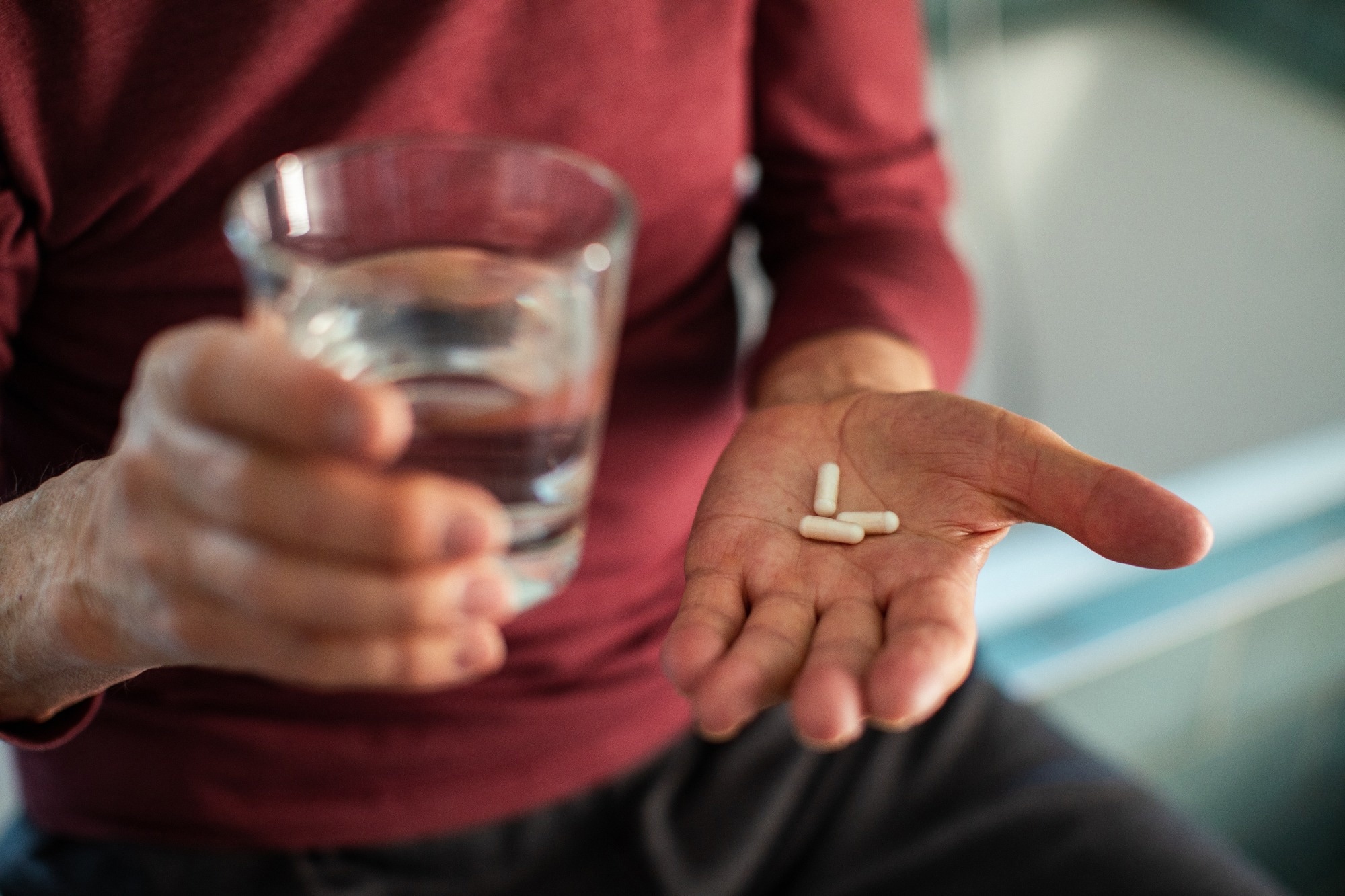A recent study published in the journal Diabetes Therapy discusses the results of the PIONEER REAL study conducted in the Netherlands, which evaluated the efficacy of oral semaglutide in managing type 2 diabetes and supporting weight loss.
Study: Real-World Use of Oral Semaglutide in Adults with Type 2 Diabetes in the PIONEER REAL Netherlands Multicentre, Prospective, Observational Study. Image Credit: Davor Geber / Shutterstock.com
Background
In 2021, about 500 million people were estimated to be living with type 2 diabetes throughout the world. The prevalence of type 2 diabetes is expected to continue to rise, with researchers estimating that approximately 700 million will be diagnosed with this condition by 2045.
In the Netherlands, an estimated 1.1 million people were living with diabetes in 2021, over 90% of whom were diagnosed with type 2 diabetes. With such a high prevalence, type 2 diabetes is associated with an annual cost of €1.3 billion in the Netherlands.
The Netherlands Diabetes Federation recommends a stepwise introduction of diabetes treatments based on glycated hemoglobin (HbA1c) levels. Typically, treatment is initiated sequentially with metformin and sulphonylureas, followed by the incorporation of insulin, glucagon-like peptide-1 receptor agonists (GLP-1RAs), or dipeptidyl peptidase-4 (DPP-4) inhibitors.
Semaglutide is a GLP-1 analog currently available as daily subcutaneous and oral formulations. In addition to diet and exercise, semaglutide has been shown to effectively manage blood glucose levels in people living with type 2 diabetes and reduce their risk of cardiovascular complications such as hypertension and inflammatory responses.
The approval of semaglutide in the Netherlands was based on the results from the phase three PIONEER clinical trial. To provide additional data supporting the use of once-daily oral semaglutide, the PIONEER REAL program was subsequently initiated in various countries throughout Europe, North America, the Middle East, and East Asia. More specifically, PIONEER REAL aims to compare the efficacy of oral semaglutide with other injectable glucose-lowering medications in adults with type 2 diabetes.
About the study
Between November 2020 and December 2022, the PIONEER REAL study was conducted at 27 sites throughout the Netherlands. All study participants were over 18 years of age, diagnosed with T2D, and had never been treated with an injectable glucose-lowering drug except for short-term insulin.
The primary study endpoint was to assess changes in HbA1c levels from baseline to the end of the study, whereas secondary endpoints included changes in body weight. The study participants were also provided with a questionnaire-based assessment of treatment satisfaction.
Study participant characteristics
A total of 187 patients were included in the current study and received once-daily oral semaglutide for 34-44 weeks. The mean age of the study cohort was 58 years, 54% of whom were male and 88% were White. The mean duration of living with diabetes was 8.7 years.
The mean body weight was 103.1 kilograms, whereas mean waist circumference and body mass index (BMI) measurements were 118.1 cm and 35.1 kg/m2, respectively.
A mean of 1.6 and 2.4 antidiabetic medications were used by study participants at baseline and the end of the study, respectively. Oral semaglutide was not included among these medications. About 10% of participants reported not receiving any glucose-lowering medications at baseline.
About 98% of participants received three milligrams (mg) of oral semaglutide, whereas 2% received seven mg of oral semaglutide for a median duration of 37.7 weeks.
Therapeutic efficacy of oral semaglutide
Oral semaglutide recipients experienced a significant reduction in HbA1c levels from 8.6% at baseline to 7.3% at the end of the study.
About 8% of the study cohort had HbA1c levels less than 7% at baseline. By the end of the study period, 48% of participants exhibited HbA1c levels of less than 7%.
A significant reduction in body weight of 5.8 kg was observed following semaglutide treatment. Notably, the HbA1c and body weight effects of oral semaglutide treatment did not differ significantly between patients treated by diabetes or non-diabetes specialists.
The participants treated with semaglutide reported a significant level of treatment satisfaction, with 26.1% and 55.4% reporting that semaglutide was easy or very easy to consume, respectively.
By the end of the study, about 79% of participants were being treated with oral semaglutide, with a mean dose of 10.6 mg. More specifically, 53.7%, 42.2%, and 4.1% were receiving 14 mg, seven mg, and three mg doses, respectively.
Safety profile
A total of 246 mild-to-moderate adverse effects were reported in 58% of oral semaglutide recipients. Ten severe adverse events were observed in 4.8% of participants, with one case of cholecystitis and one anal abscess likely related to oral semaglutide treatment.
Gastrointestinal disorders were the most frequently reported side effects experienced by about 45% of study participants, similar to that observed for other GLP-1RAs. Adverse effects that led to semaglutide treatment termination included nausea, vomiting, and diarrhea.
One death due to cardiac disorder occurred during the study period; however, this event was likely unrelated to semaglutide treatment.
Journal reference:
- van Houtum, W., Schrombges, P., Amadid, H., et al. (2024). Real-World Use of Oral Semaglutide in Adults with Type 2 Diabetes in the PIONEER REAL Netherlands Multicentre, Prospective, Observational Study. Diabetes Therapy. doi:10.1007/s13300-024-01588-5, https://link.springer.com/article/10.1007/s13300-024-01588-5
Source link : News-Medica

